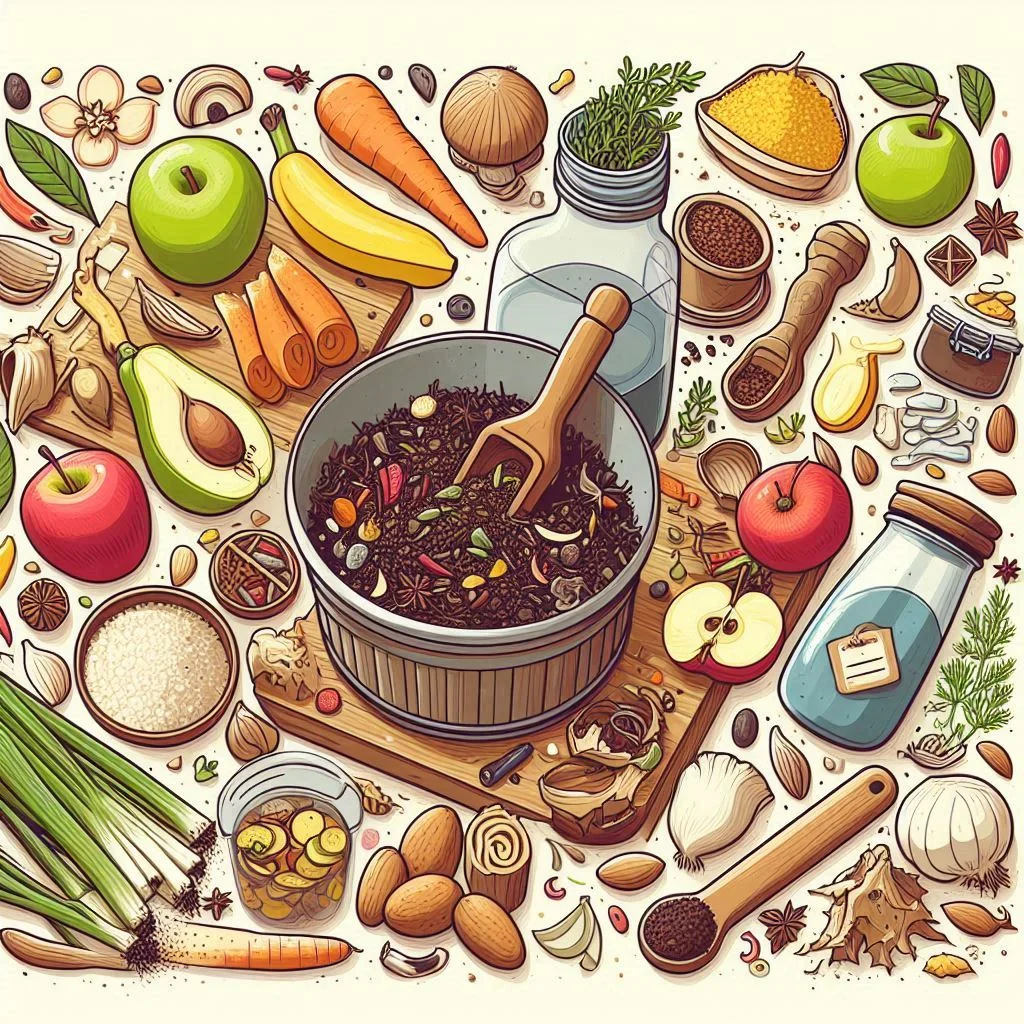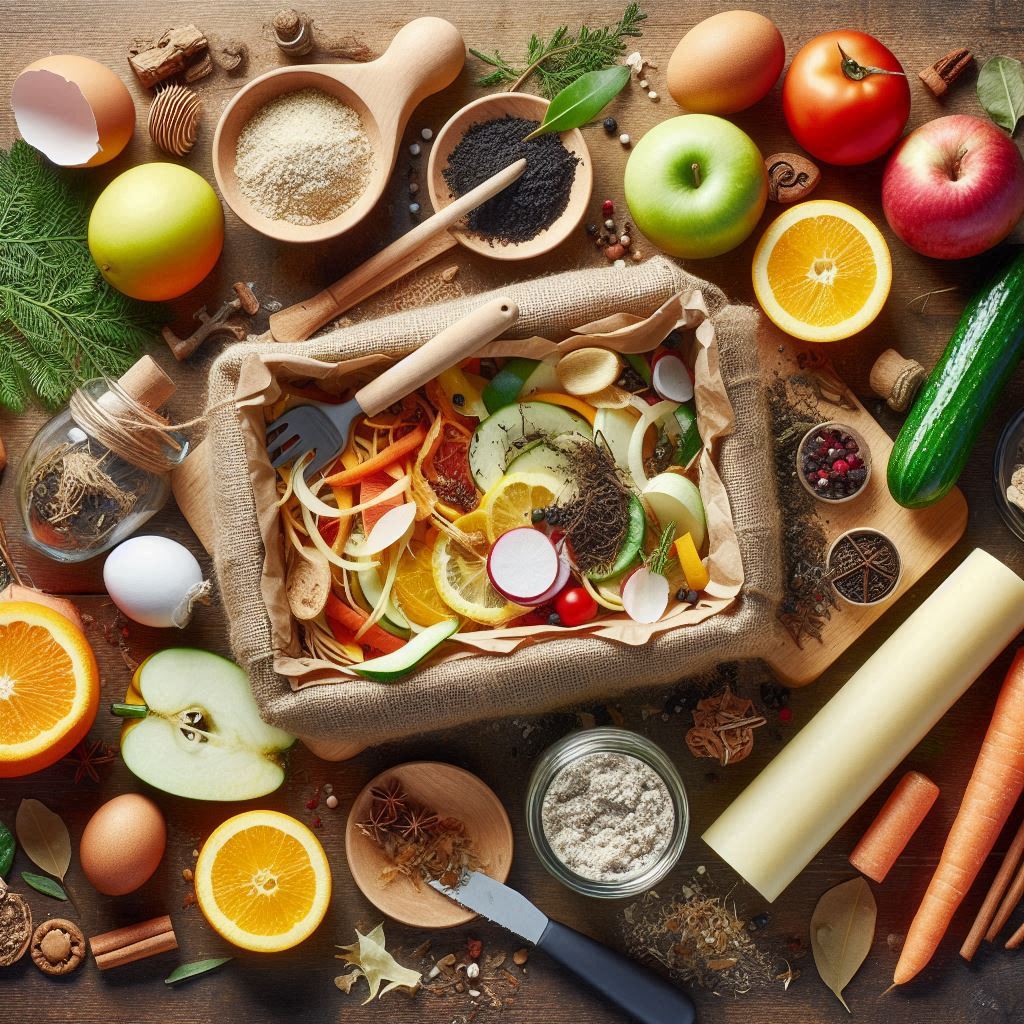If you’re looking for a simple, eco-friendly way to reduce waste and create nutrient-rich soil for your garden, composting is the answer. Composting is the process of turning organic materials like kitchen scraps into a natural fertilizer that benefits the environment, enriches soil, and helps plants grow. Even if you’re a complete beginner, starting your own compost pile is easier than you think—and the results are well worth it!
In this guide, we’ll cover everything you need to know to start composting at home, from what materials to use and how to maintain your compost, to troubleshooting common issues. By the end of this post, you’ll be ready to turn your kitchen scraps into rich, black gold for your garden!
1. What is Composting?
Composting is a natural process of breaking down organic materials like food waste, leaves, and plant matter into a nutrient-rich soil amendment called compost. Microorganisms such as bacteria, fungi, and worms decompose the material over time, turning what would otherwise be waste into valuable, usable soil.
The basic principle of composting involves balancing two types of organic matter:
- Green materials: Nitrogen-rich items like fruit and vegetable scraps, coffee grounds, and grass clippings.
- Brown materials: Carbon-rich items like dry leaves, shredded newspaper, and cardboard.
By combining these materials in the right proportions and providing air and moisture, you can create compost that’s perfect for your garden or plants.
2. Benefits of Composting
Composting is one of the easiest ways to reduce household waste and live more sustainably. Here are some of the key benefits:

Environmental Benefits:
- Reduces waste: Composting keeps food scraps and organic waste out of landfills, reducing methane emissions and landfill overcrowding.
- Enriches soil: Compost improves soil structure, moisture retention, and fertility, reducing the need for chemical fertilizers.
- Promotes biodiversity: Compost provides nutrients for beneficial microorganisms, fungi, and worms, creating a healthy soil ecosystem.
Personal Benefits:
- Cost savings: Homemade compost is free! It saves money on buying fertilizers and soil conditioners.
- Healthier plants: Compost helps plants grow healthier by providing slow-release nutrients, which leads to better yields and stronger plants.
- Satisfaction: Composting is a rewarding way to reduce your carbon footprint and give back to the earth.
3. What You Need to Start Composting
You don’t need a lot of equipment to start composting, but a few essentials will help you get started on the right foot.
Composting Essentials:
- A compost bin or pile: Choose between an outdoor compost bin, a DIY pile in your backyard, or a worm bin if you prefer indoor composting.
- Kitchen scrap container: A small, sealable container to collect food scraps in the kitchen before transferring them to your compost pile.
- Greens and browns: Collect a good mix of nitrogen-rich (green) and carbon-rich (brown) materials to keep your compost balanced.
- A pitchfork or compost aerator: Useful for turning and aerating your compost to speed up decomposition.
Pro Tip:
If you’re short on outdoor space, consider starting with vermicomposting (worm composting) or a small indoor compost bin designed for apartments.
4. Step-by-Step Guide to Making Compost from Kitchen Scraps
Here’s a simple guide to help you turn your kitchen scraps into high-quality compost, even if you’ve never composted before.
1. Choosing Your Composting Method
First, decide which composting method suits your space and lifestyle. The three main types of composting include:
- Backyard composting: The most common method, ideal for homes with outdoor space. You can use a compost bin or create a pile directly on the ground.
- Tumbler composting: Compost tumblers are enclosed containers that make it easy to turn and aerate your compost. These are great if you want to speed up the process and keep things tidy.
- Vermicomposting: Using worms to compost food scraps indoors is a fantastic option for people with limited outdoor space. Worms break down organic matter quickly and create nutrient-rich compost known as worm castings.
2. Collecting Kitchen Scraps
Once you’ve chosen your method, start collecting your kitchen scraps. Not all food waste is compostable, so it’s important to know what to include and what to avoid.
Compostable Kitchen Scraps (Greens):
- Fruit and vegetable peels and cores
- Coffee grounds and tea bags (unbleached)
- Eggshells (crushed)
- Grains and pasta (cooked)
- Fresh grass clippings
Non-Compostable Items:
- Meat, fish, and dairy (these attract pests)
- Oils and fats
- Plastic or any non-biodegradable materials
- Diseased plants or weeds with seeds
- Pet waste (unless specifically composted in a dedicated system)
3. Balancing Greens and Browns
The success of your compost pile depends on balancing greens (nitrogen-rich materials) and browns (carbon-rich materials). A good ratio to aim for is 2-3 parts browns to 1 part greens.
Examples of Browns:
- Dry leaves
- Shredded newspaper or cardboard
- Straw or hay
- Wood chips or sawdust (untreated)
The carbon (browns) helps absorb moisture and prevent odors, while the nitrogen (greens) provides nutrients and energy for the microbes that break down the compost.
4. Layering Your Compost
To create a healthy compost pile, it’s important to layer the materials properly. Here’s how to do it:
- Start with a base layer of browns: Begin by placing a thick layer of brown materials (like dry leaves or straw) at the bottom of your compost bin or pile. This provides good aeration and drainage.
- Add greens: Add a layer of kitchen scraps or other green materials (like grass clippings) on top of the brown layer.
- Continue layering: Alternate between layers of greens and browns, ensuring each layer is about 2-4 inches thick.
- Moisten each layer: Lightly water each layer to maintain moisture. Your compost should be about as damp as a wrung-out sponge—not too dry, but not too wet.
5. Maintaining and Turning the Compost
To speed up the composting process and prevent your compost from smelling, you’ll need to aerate the pile regularly. Turning the compost helps introduce oxygen, which is crucial for decomposition.
- Turn the compost: Every 1-2 weeks, use a pitchfork or compost aerator to mix the layers. This prevents compacting and allows air to flow through the pile.
- Check moisture levels: Ensure the compost isn’t drying out or becoming waterlogged. Add water if it’s too dry or more browns if it’s too wet.
5. How Long Does Composting Take?
The time it takes for your compost to break down depends on several factors, including the method you’re using, the balance of greens and browns, and how often you turn it. Here’s a general breakdown of how long each method typically takes:

| Composting Method | Time Frame |
|---|---|
| Backyard Composting | 3-12 months |
| Tumbler Composting | 2-4 months (faster with regular turning) |
| Vermicomposting | 2-3 months |
Pro Tip:
Compost is ready to use when it looks dark and crumbly, smells earthy, and no longer has recognizable food scraps.
6. Common Composting Problems and Solutions
Even the best compost piles can run into issues. Here are some common composting problems and how to solve them:
Problem: The Pile Smells Bad
- Cause: Too much moisture or not enough air circulation.
- Solution: Add more browns (dry leaves, cardboard) to absorb moisture, and turn the pile more frequently to aerate it.
Problem: The Compost is Too Dry
- Cause: Not enough moisture in the pile.
- Solution: Add water to the compost and mix thoroughly. Consider adding more greens, which are naturally moist.
Problem: The Compost is Attracting Pests
- Cause: Adding meat, dairy, or oily foods that attract animals.
- Solution: Avoid composting meat, dairy, or greasy foods. Use a secure compost bin with a lid if you’re composting outdoors.
Problem: The Compost Isn’t Breaking Down
- Cause: Not enough greens or the pile is too dry.
- Solution: Add more nitrogen-rich materials (greens) like fresh food scraps and coffee grounds, and check the moisture levels.
7. FAQs About Composting Kitchen Scraps
Q1: Can I compost in an apartment or a small space?
Yes! Vermicomposting (using worms) or small indoor compost bins are great options for those with limited space. Many communities also offer compost drop-off locations or curbside composting services.
Q2: How do I know when my compost is ready?
Your compost is ready when it looks like rich, dark soil, smells earthy, and has no recognizable food scraps. This process can take anywhere from 2-12 months, depending on your method and conditions.
Q3: Can I add citrus peels or onions to my compost?
Yes, but in moderation. Citrus and onion peels are acidic and can slow down the composting process if added in large quantities. Chop them up into smaller pieces to help them break down faster.
Q4: Can I compost during the winter?
Yes! Composting continues in winter, though it slows down in cold temperatures. Insulating your compost bin or moving it to a sunnier spot can help maintain the process. You can also continue to add kitchen scraps, and the pile will begin breaking down faster as the weather warms up.
Q5: How can I avoid fruit flies in my compost?
To avoid fruit flies, cover fresh food scraps with a layer of browns (like leaves or shredded paper) and avoid leaving exposed food on the surface of your pile. Fruit flies are attracted to uncovered greens.
Conclusion
Composting kitchen scraps is a simple yet powerful way to reduce waste and create nutrient-rich soil for your garden. Whether you have a backyard or live in an apartment, there’s a composting method that works for everyone. By following this beginner-friendly guide, you’ll be turning food scraps into rich, fertile compost in no time—benefiting both your plants and the planet.
Remember, composting is a journey. Start small, stay consistent, and enjoy the satisfaction of making your own natural fertilizer at home!



0 Comments